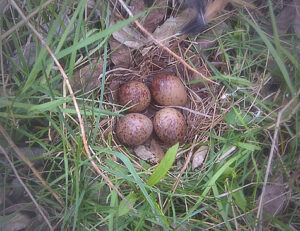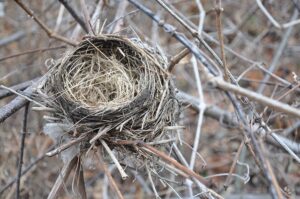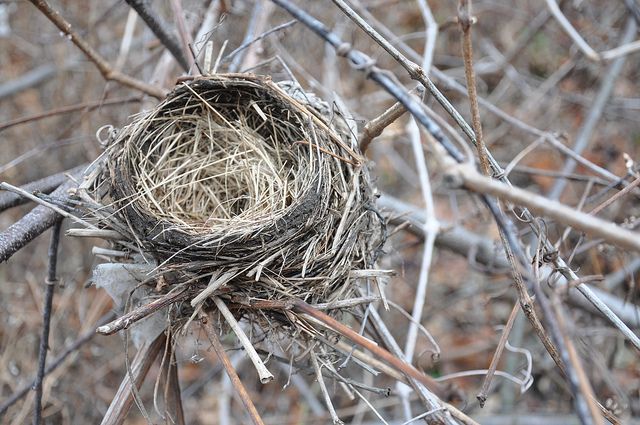November 10: Noticeable Nests

Woodcock scrape nest
Now that most of our deciduous trees have dropped their leaves, it is the perfect time to spot bird nests. Tucked into the crooks of trees or weaved into the branches, the nests are still relatively intact and often stand out. It is possible to identify the species of bird that made the nest by examining the materials that were used to build it, its size, and the location in which it was found.
Birds build nests to keep eggs and hatchlings warm, while protecting them from predators and bad weather. In the beginning these nests were simple scrapes, slight depressions in the ground with little to no nesting material. Our native killdeer and woodcock are two species of birds that still use scrape nests. Over time designs evolved, turning into the platform nests made from stacked branches like the osprey and hawk build in shrubs or trees.

American robin cup shaped nest
Eventually birds advanced to cup nests, weaved together from a variety of materials, and placed in various locations from trees to grasses depending on the species. Cup nests are created by most of our perching songbirds including the American robin and song sparrow. Finally, nests are also found in burrows and tree cavities, such as those that bank swallows and woodpeckers create.

Osprey platform nest on the Southport swing bridge

Cavity nest in tree
What nests can you spot now that fall is upon us? While this is a great time to spot and observe bird nests more closely, a reminder that a federal permit must be obtained in order to legally possess a birds nest. Leaving the nests in the trees not only allows someone else to spot it, but the nest can also provide a warm winter home to small creatures such as the white footed mouse.





